Affiliate links on Android Authority may earn us a commission. Learn more.
Sony Smartwatch 3 Review
November 25, 2014
> Related Sony Smartwatch 3 news
It was certainly surprising when Sony introduced the Smartwatch 3 running Android Wear, considering that the company wasn’t officially announced as a hardware partner prior to that. Given the name, this, of course, isn’t Sony’s first foray into the smartwatch game, but definitely garnered a lot of attention by being the first Android Wear device from the company. With the competition in this space steadily growing, what does Sony’s take on Android Wear have to offer? We find out, and more, in this comprehensive review of the Sony Smartwatch 3!
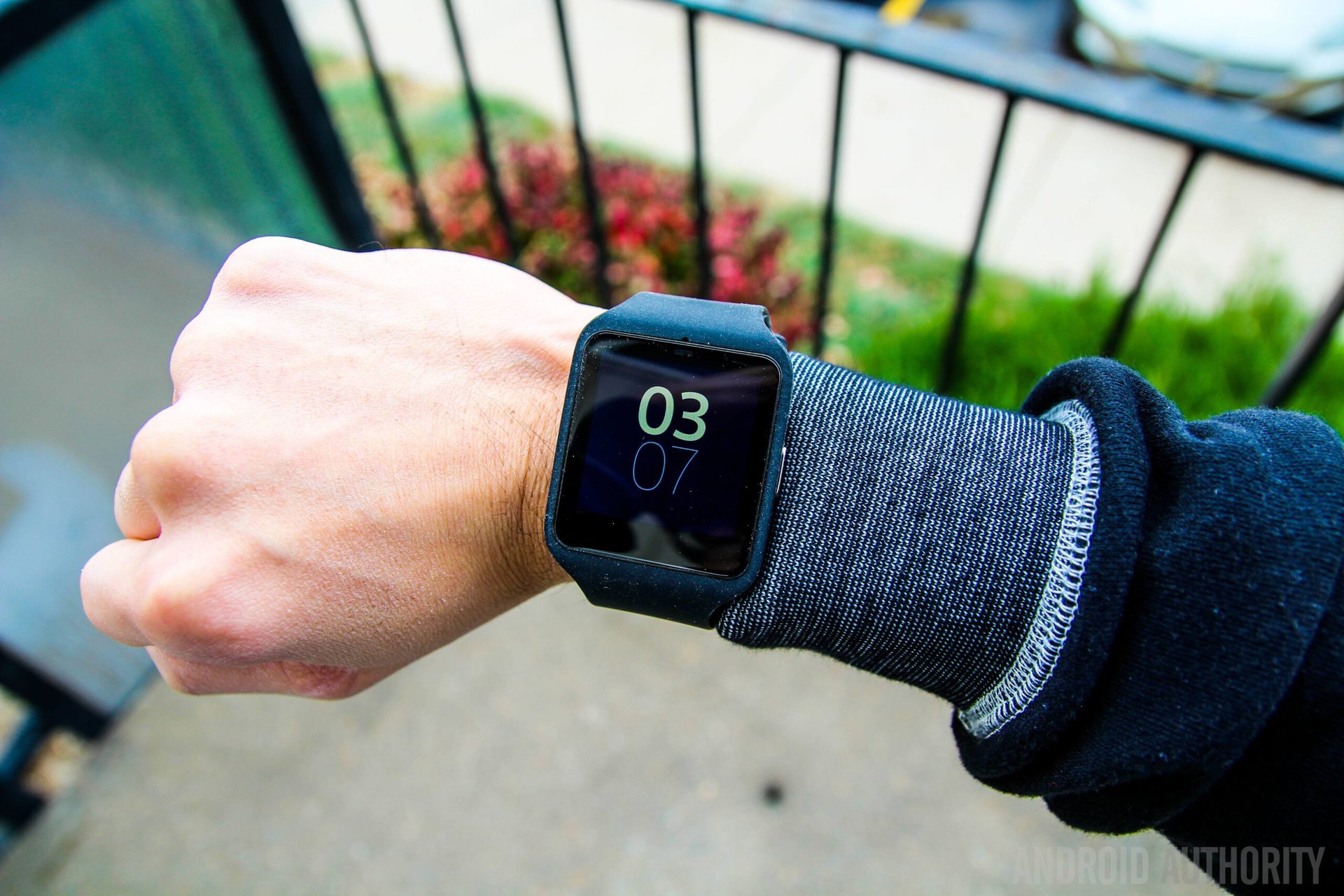
When it comes to the design, Sony decided to go a slightly different route compared to other OEMs, opting for a square watch face, and a general look and feel of a fitness band, as opposed to a traditional watch. It’s not the classiest or most elegant design around, and looks to be targeted at a more active audience.
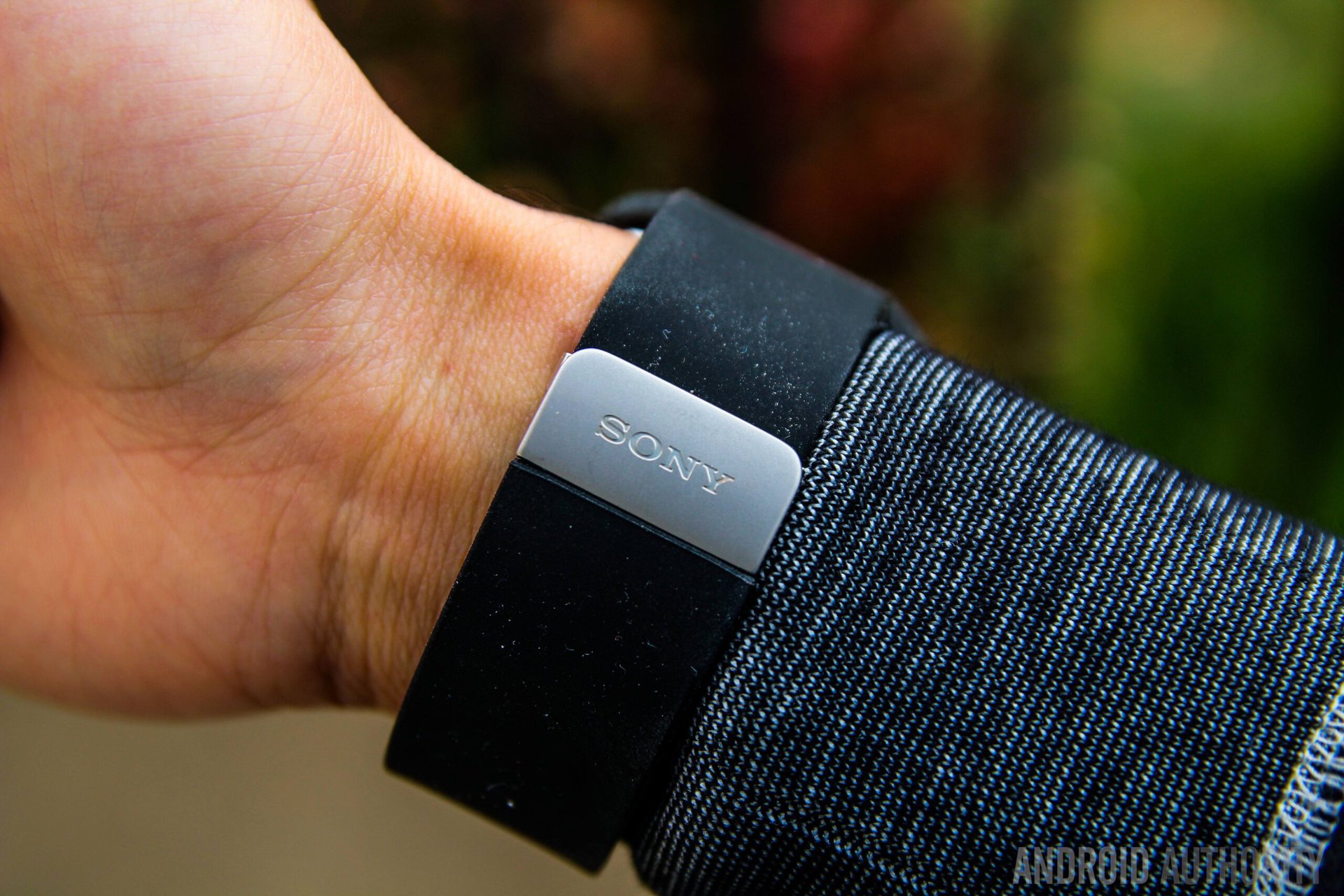
The wrist straps are made out of silicone, that can be connected using an adjustable metal clasp, that makes this device very easy to put on. The metal clasp is a nice touch, and the silicone band is very soft and comfortable on the wrist. As is the case with many silicone products, the straps are a dust and lint magnet though, making it quite difficult to keep clean.
The face of the watch, or the “core” as Sony calls it, comes with a similar implementation to the Sony Smartband that was released earlier this year. It is removable, but there isn’t a lot of reasons why you’d want to take it out, other than to replace the wristband. This also means that wrist strap options will be limited to only what Sony has to offer for now, until any third party manufacturers get into the game. For now, the only color option available is black.
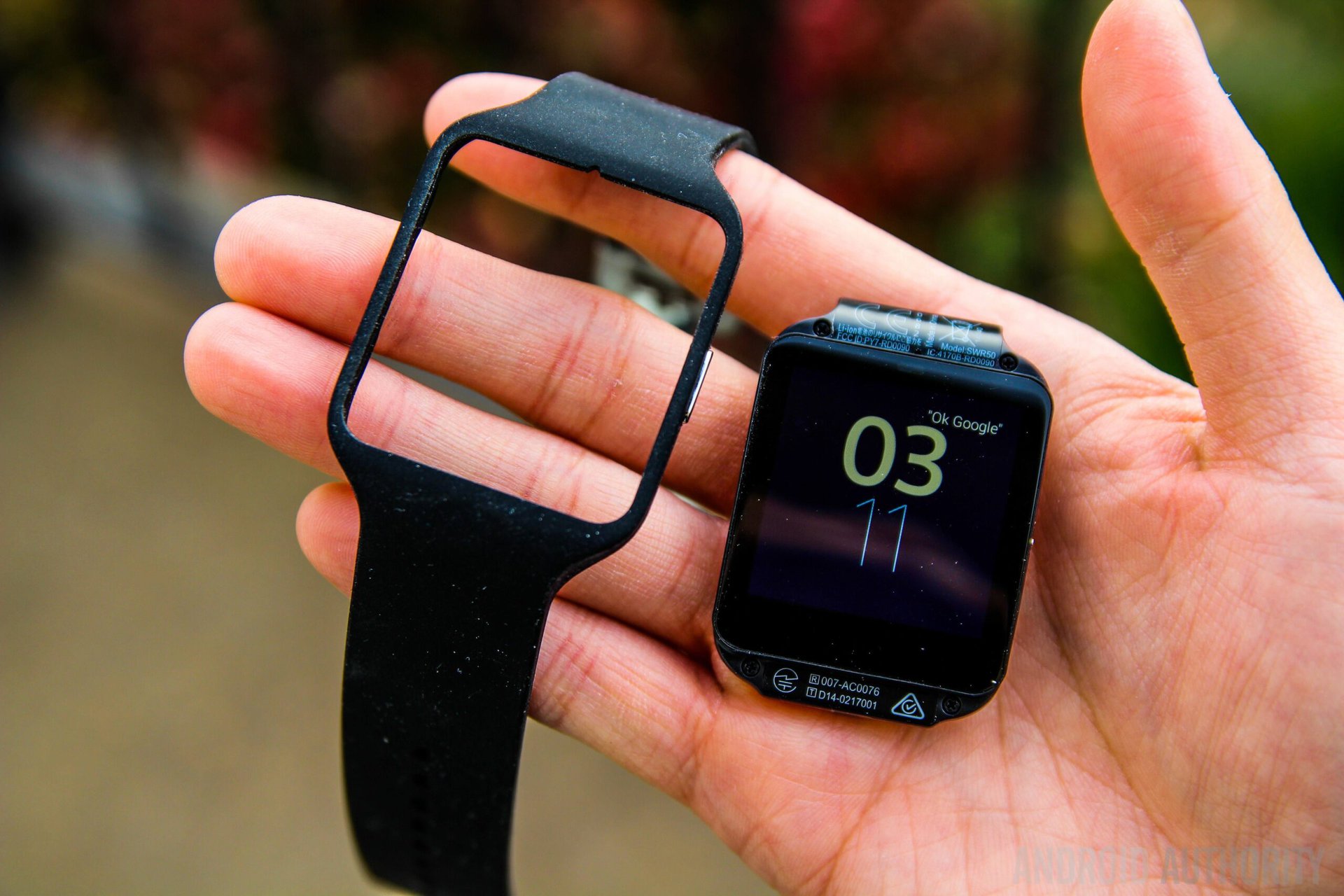
The Sony Smartwatch 3 comes with an IP68 rating for resistance against dust and water, but what it surprisingly missing is a heart rate monitor. As far as the size goes, it isn’t much bigger than the Moto 360, and I personally feel like it isn’t too big. That said, size does come down to individual taste, but if you don’t mind slightly bigger watches, the size of the Smartwatch 3 won’t be an issue.
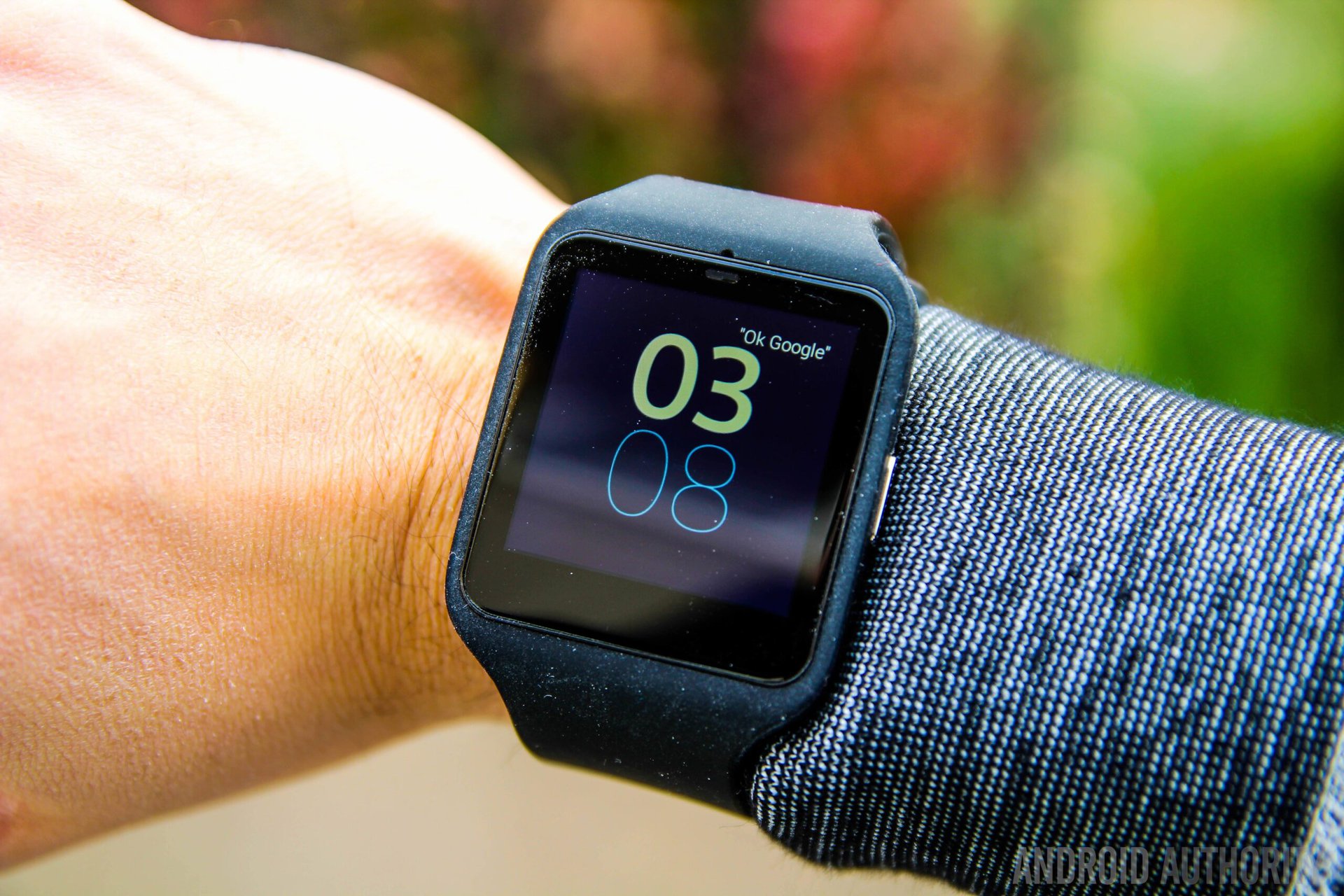
The Smartwatch 3 comes with a square 1.6-inch transflective display, with a resolution of 320 x 320. While the specifications are on par with the competition, the quality unfortunately doesn’t match up. It does get bright and the viewing angles are great, but the colors look washed out and there is a yellowish tint to the display. This tint is especially noticeable when on a white background, and since there are a lot of white elements with Android Wear, it is easily observed. The bezels around the display are also thick, but that is something we’ve come to expect from devices with square watch faces.
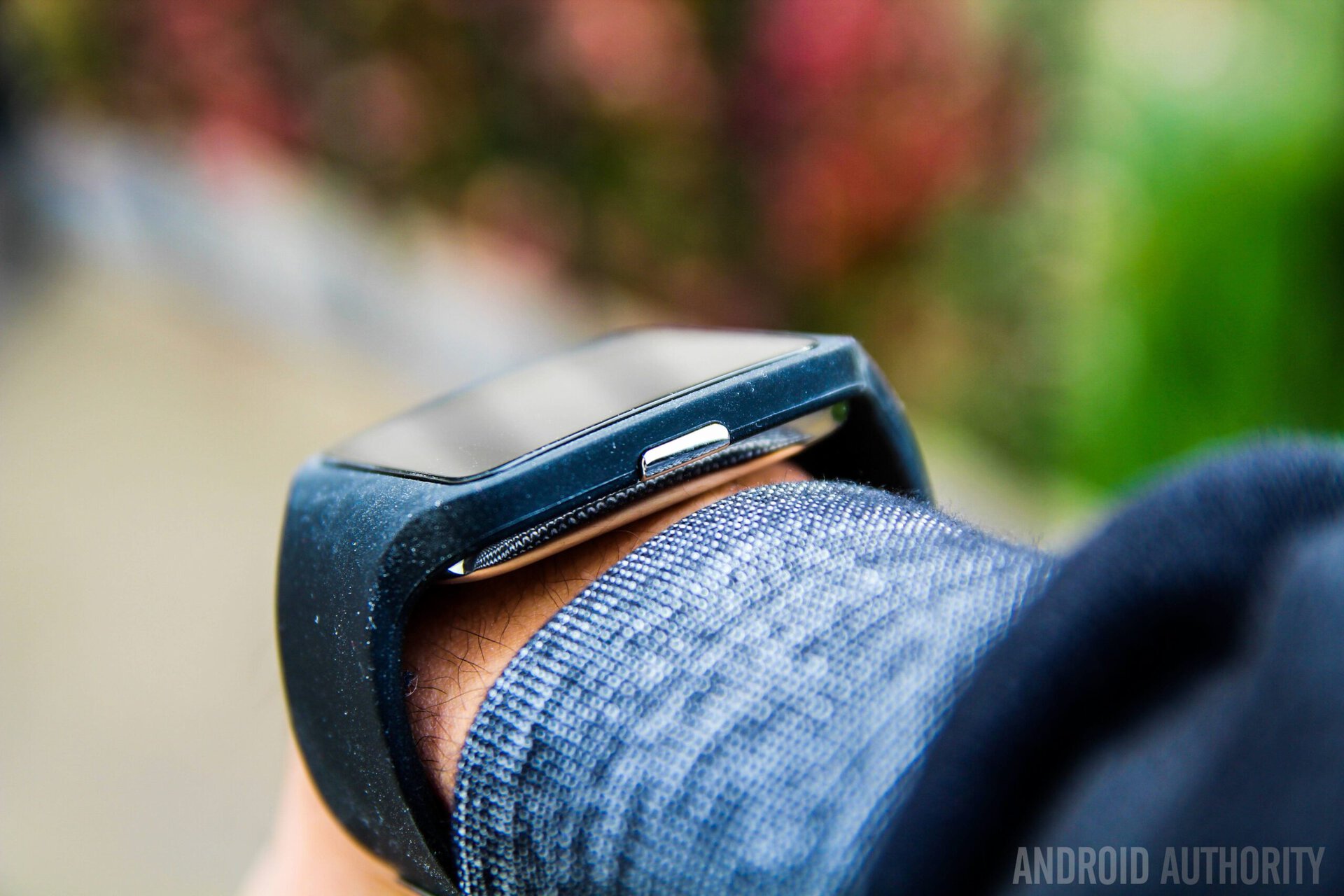
The Smartwatch 3 comes with a 1.2 GHz quad-core processor and 512 MB of RAM, which is standard fare with regards to smartwatch specifications. As expected, the performance is fast and responsive, and there are no instances of lag, stutter, or dropped frames, leaving you with a fast and enjoyable experience.
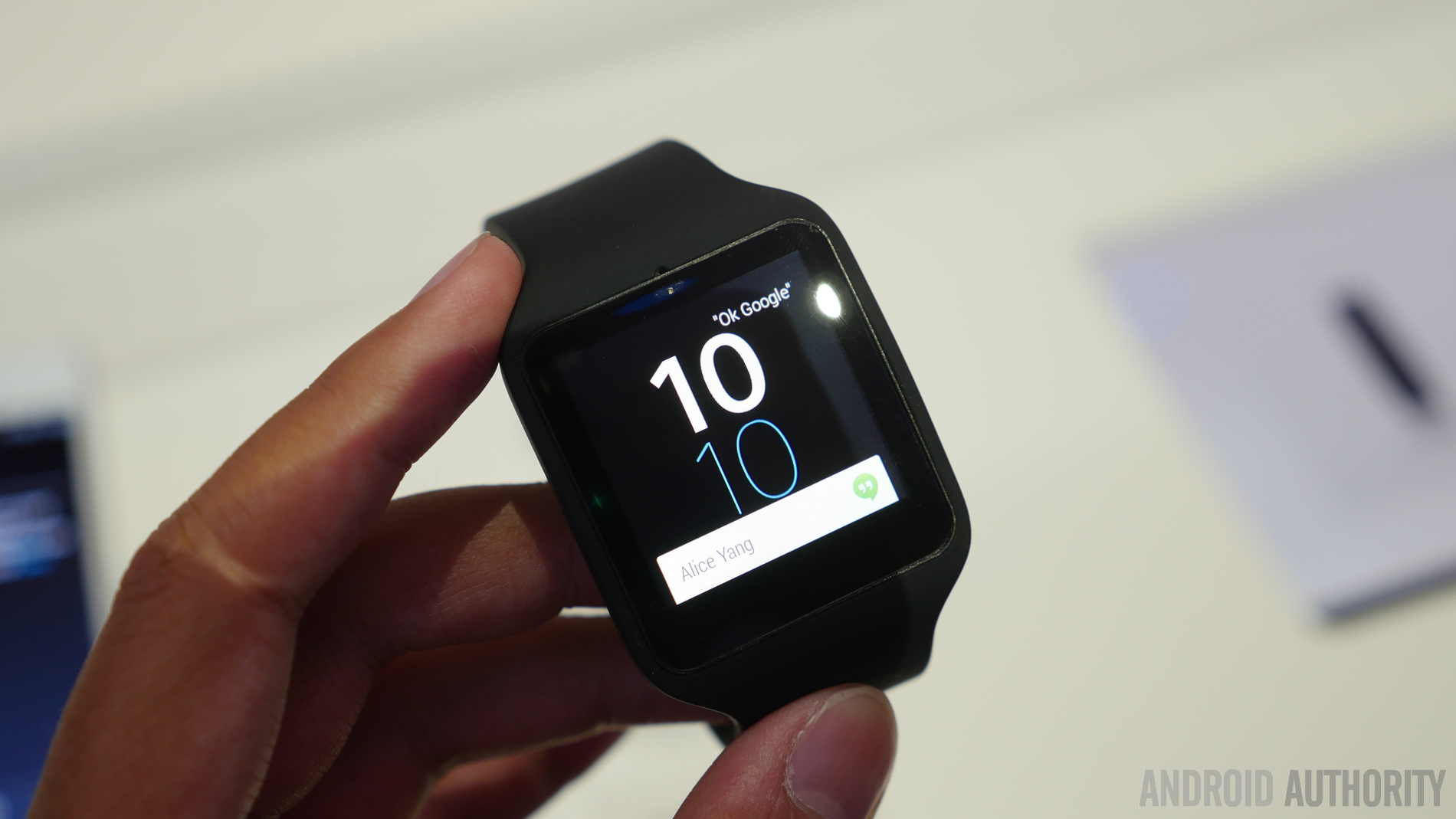
The latest update to Android Wear introduced GPS functionality and offline music storage, and the Smartwatch 3 is the first device that can take advantage of both these features. Despite the omission of a heart rate monitor, fitness is a focus of this device, and with the built-in GPS, you can keep a track of your walk or run independently of your phone. It is quite annoying to have to lug your phone around while working out, so this is definitely a big help. The information syncs with the My Tracks app for now, but that should change soon as more developers update their apps.
You can now also store music directly on the 4 GB of internal storage available on the smartwatch, but the only application that is currently supported is Google Play Music. Songs can be transferred via Bluetooth, and since the watch itself doesn’t come with a headset jack, you will also need a bluetooth headset to take advantage of this feature.
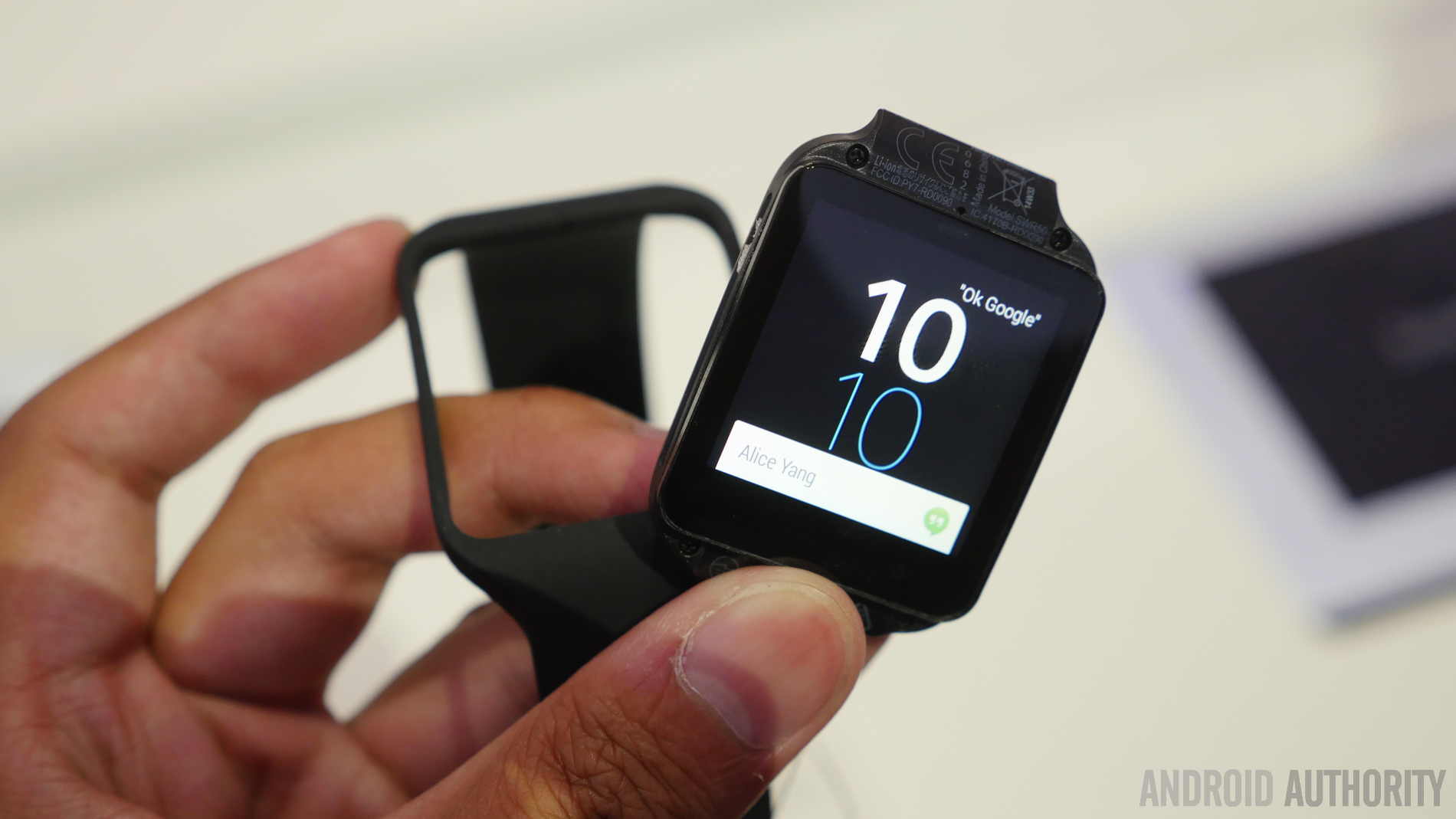
The Sony Lifelog app has also been updated to supported the Smartwatch 3, which not only keeps track of your workout, but other daily activities as well, like sleeping, playing games, watching tv, and browsing the web. Hitting you daily goals will give you a notification.
Since Google does let OEMs add their own spin on Android Wear, the software experience in general is identical across the board. One area of differentiation is with regards to watch faces, but while Sony has added a few, they are generally quite plain and simple, and don’t do much other than tell you the time.
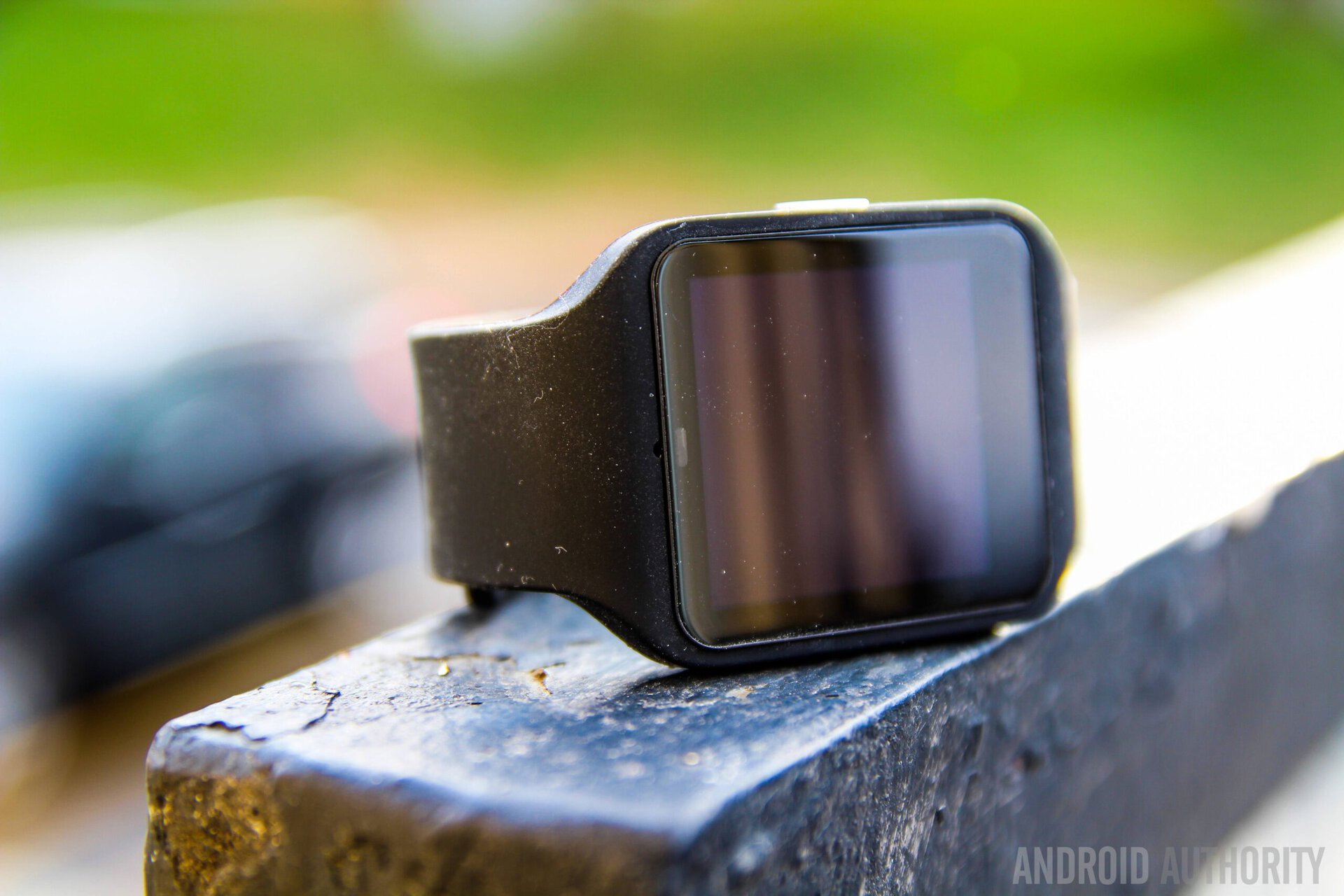
The Smartwatch 3 comes with a 420 mAh battery, which is larger than what we’ve seen thus far, but the battery life is just average for the most part. I was getting up to 2 days of use with the screen always on, which went up to two and half days, with the screen off. Using the built-in GPS to track your walks or jogs does drain the battery extremely fast though, with the battery losing almost 20% of life in just an hour. If you do plan to use the GPS often, you may find it quite difficult to get a full day of use out of this device.
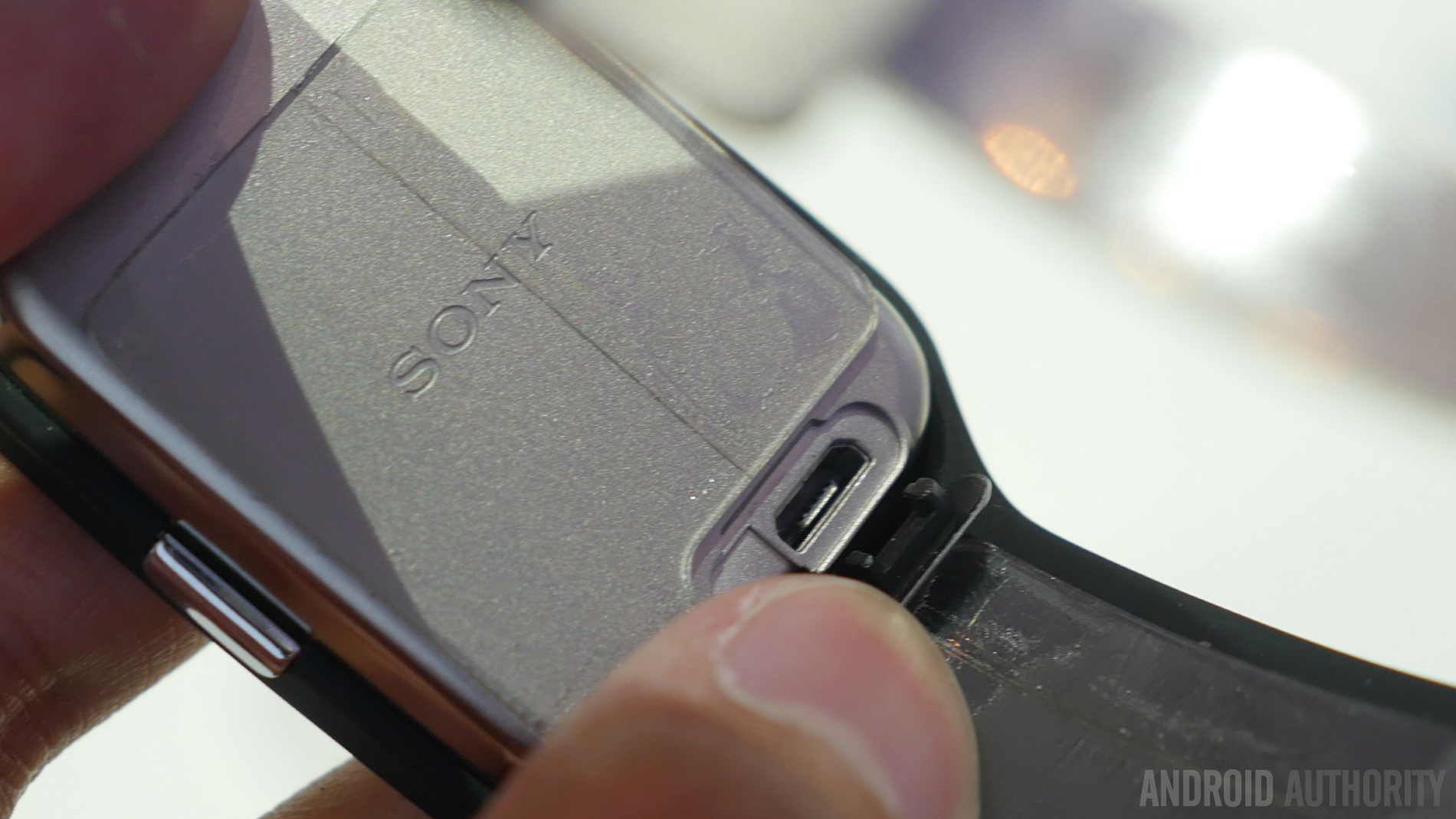
The good thing about the Smartwatch 3 is that it doesn’t require a proprietary dock or charger, and can be charged with any microUSB charger. It isn’t the most elegant solution when it comes to charging a smartwatch, but the standard charging method means that you won’t find yourself having to remember to carry around a specific charging apparatus, which is definitely a benefit.
The Sony Smartwatch 3 is available for $249.99 from the Google Play Store, which puts it at the higher end when it comes to current crop of smartwatches. It’s not the prettiest device around, but the added fitness-centric functionality is its selling point.
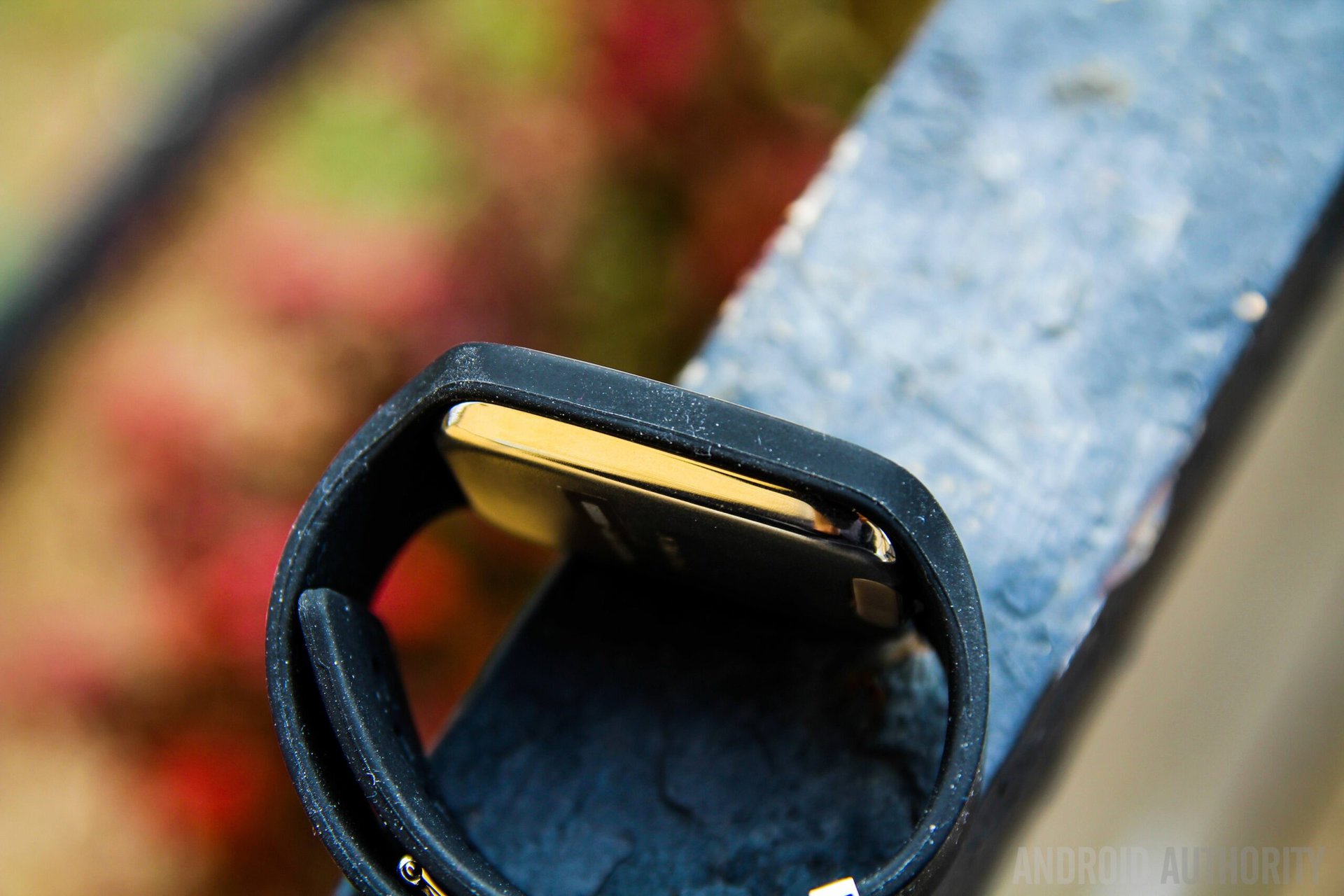
There you have it – a closer look at the Sony Smartwatch 3! Sony’s entry into the Android Wear arena gives consumers even more options, but its price point can be hard to justify, especially when you consider the way it looks. Being the first Android Wear device to feature GPS functionality and offline music storage is a plus, and it is up to you as to whether these features are important enough.